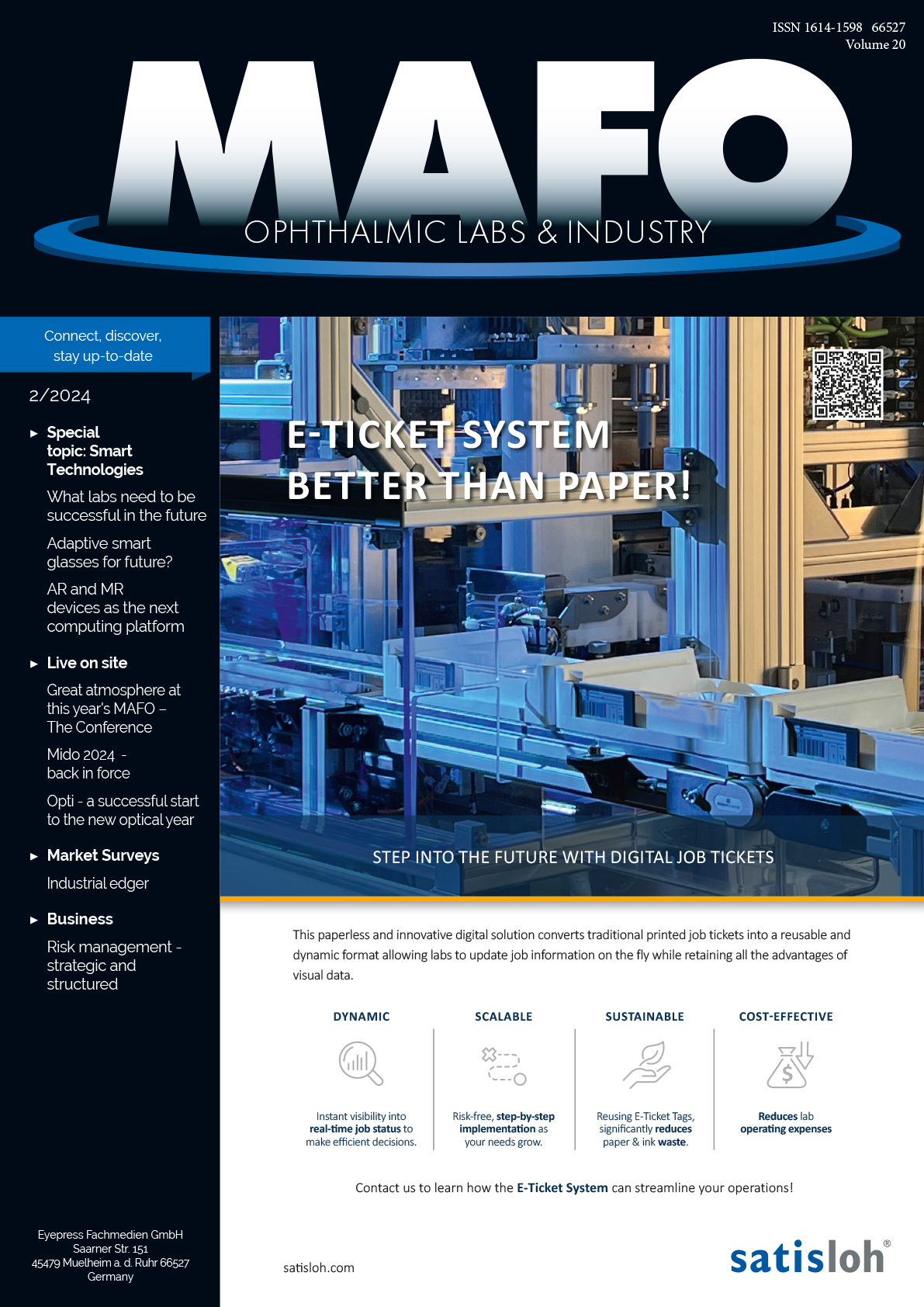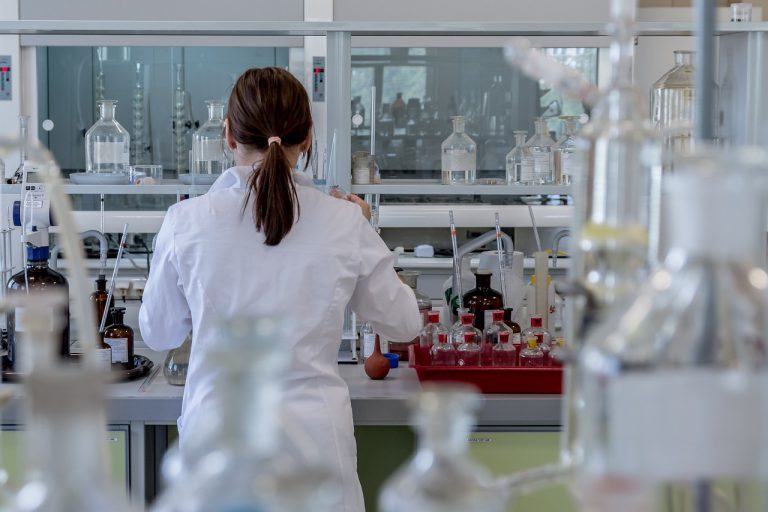What labs need to be successful in the future

8 points that constitute the power-lab of the next decade
The economic trend in the ophthalmic industry is obvious: Due to demographic changes associated with rising demands and new markets, there is a continuing request for more. At the same time, labs are confronted with an immense cost pressure. Labs are trying to meet these demands for higher throughput and reduced costs per lens while striving for unique products. However, in the face of a shortage of people and rising costs, this is not easy. Labs’ spendings must be reasonable, and investments need to be future proof. But what constitutes a lab that will work for them in the future? Not just the implementation of automation and a continuous improvement of machines. A future lab requires smart solutions, artificial intelligence, and more. Simply put: a system that works for you.
Imagine a power-lab, built on intelligent systems, that makes smart decisions on its own – an integrated system with the intellectual power to work for you. What once was a vision, today sets the benchmark for an ophthalmic lab 4.0. Intelligent machines and integrated solutions solve many problems of the past, when lab managers and their teams still worked manually to keep the production running. Back then, all core elements like lab management systems and machines, production management and conveyor systems as well as quality inspection were not integrated. Missing communication and insufficient integrated workflows made the whole production dependent on the expert’s constant action, observation and cutting out the errors.
Supervising the whole production process was hard, troubleshooting often painful and time consuming. The overall processes: not as efficient as they could be. Needless to say, a lab manager’s workload was continually high, and it might have felt like always being behind, chasing the process. Fortunately, this has changed for the good. Integrated systems can now work for you and make the whole work shift easier to control. Once installed, a real future lab will streamline and simplify the lab managers’ life, and completely change his or her role in the lab towards more strategic decision taking. By boosting productiveness and efficiency of the overarching process, economic aims will become achievable. This future lab exists. So, what does it take to make smart lab management happen and benefit from this new production era?
1. Working smarter: Innovation for economic growth
The first key aspect of a power-lab (editor’s note: power-lab is a brand name of the Schneider company) remains high-end machines: To lower the production costs of each job, increased investment utilization is important, as well as reduced labor costs.
High-end machines tackle this need and can be seen as a vital investment to remain competitive today and in the future. “We understand that only best in class machinery will equip labs for rising demands and cost pressure by ensuring high throughput of lenses per hour, while saving resources,” says Stephan Huttenhuis, Vice President Technology at Schneider. “If you look at generating for example, the newest solution in the market achieves up to 50 percent higher throughput than previous generations – at the same footprint.”
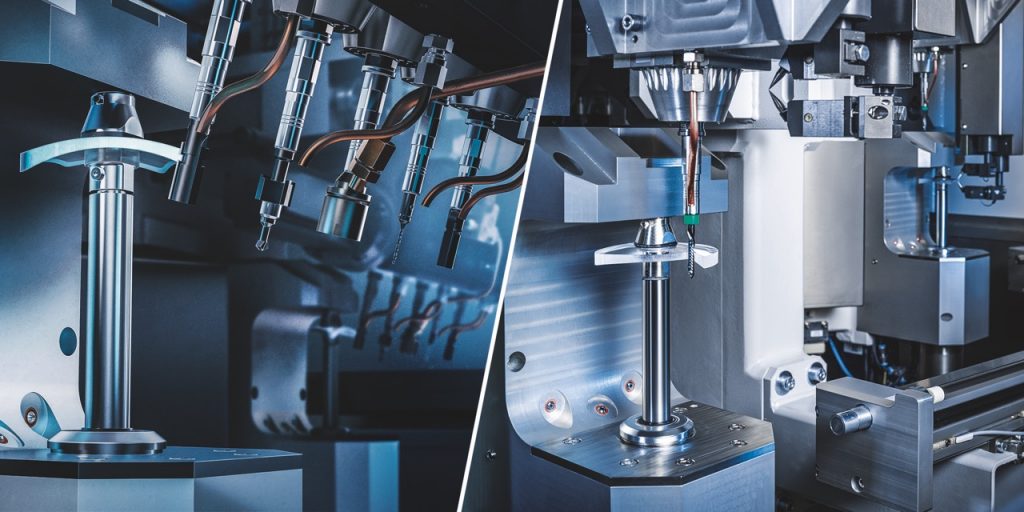
This is important since smallest footprint becomes a major requirement because space is highly limited in many locations. Another example for improvements are the latest cleaning solutions with radically reduced equipment size that save precious production space. Many labs today also opt for centralized swarf management to save space.
Another opportunity to look for is time savings: smart machines that are more integrated and cover several steps in one, or run steps in parallel, improve lab productivity by saving precious time. In the best case, functionality even reduces the number of machines – which again saves space and money. This is possible with highly versatile blockers that can switch block rings or edging machines that work with four processing stations at the same time.
Huttenhuis: “Our new generations of machines are always designed to meet the major market needs; with the investment our customers put in, they simply get more results – or save money.”
2. Holistic optimization: System wide
Knowing that every second counts, to date machines have always been optimized for speed. Faster. Faster. And once again faster. But can simply improving the machines by their speed and performance be enough progress?
The company Schneider came to the crucial point that it requires more to cross the line of a new era; and instead of focusing on individual machines, they decided years ago to concentrate on more holistic and systematic approaches: Their vision is to create a fully-automated lab – hands free with intelligent solutions.
This strong vision has been realized with the Modulo system, which combines machines, measurement systems, accessories, and conveyors in one single, intelligently interlinked unit. The cognitive machines manage the production flow fully self-sufficient.
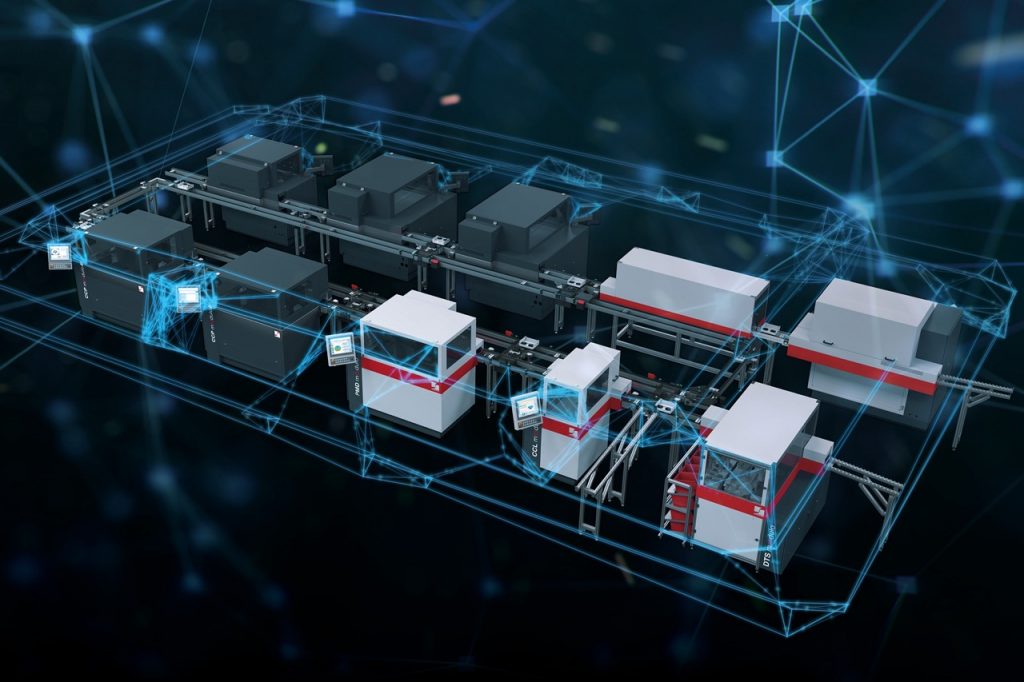
This avoids inefficiencies between machines or processes, e.g. jobs waiting to pass a production bottle neck, causing immense time delays and ultimately production losses. “We observed very often that in many labs the machines worked nicely, and the process was good, but not the overall workflow,” says Gunter Schneider, President at Schneider. “That’s where we saw great potential: Tackling those inefficiencies would definitely boost efficiency.”
One can say that this systematic approach was designed to leverage lab work to a new level, leading to an overall balanced workflow and workload. Today, it allows fluent processes e.g. from surfacing, to coating to edging.
New systems in the making will automate and integrate the coating process to streamline overall production. A potential alternative to batch coating, the current go to solution that causes a significant slowdown of the overall flow. “An integrated system accomplishes smoother production and makes the most of all resources and capacities. The highest machine utilization possible means taking full advantage of what you have got. Still, maximizing productivity isn’t everything, instead we want to offer solutions that really help the people who work with our system.” concludes Schneider.
3. Built-in intelligence and communication
The most modern systems are now equipped with top-notch intelligence. This helps a lab manager to become less dependent on having the right people at the right time – one of the scarcest resources nowadays.
This will be ensured through smart machines with cognitive features utilizing the Internet Of Things (IOT) including sensors and software, fluent communication between all core elements of the system and throughout all processes as well as efficient and transparent data analysis, reporting and visualization.
A smart machine knows its own condition at any time. Far beyond the current process, it knows all the details e.g. the status, consumable wear and lifetime, processing parameters etc. It knows every factor that might have an impact on product quality, consumption of resources and ultimately lab performance. It will constantly report and can be benchmarked against goals.
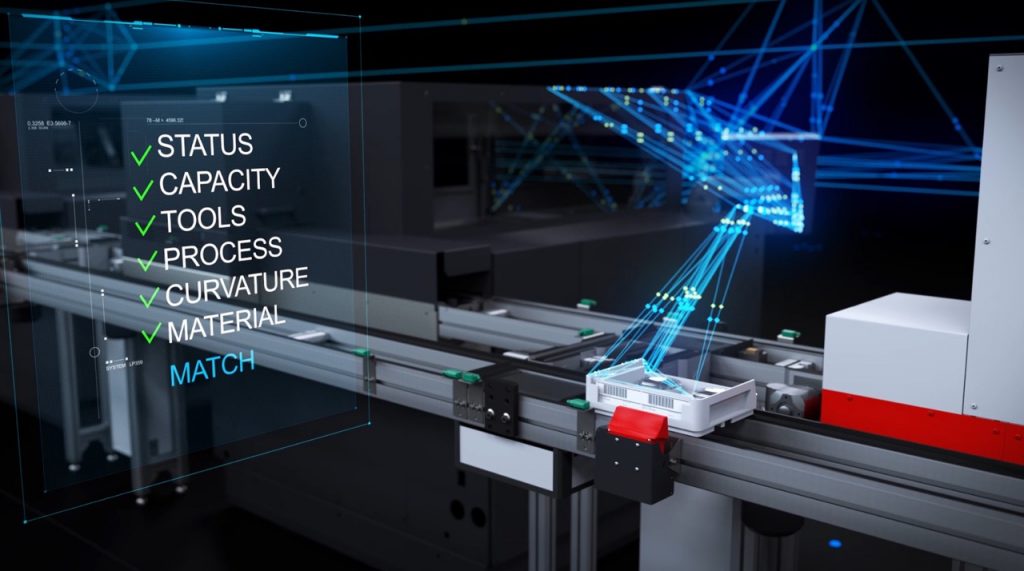
And most importantly, it will immediately provide information on critical aspects. This helps the lab manager to intervene as quickly as possible to tackle an occurring problem and prevent machine downtime. This way, troubleshooting can be streamlined and taken care of much faster. Lowest harm for productivity equals lowest stress for the lab manager.
Communication systems make sure that the overall workflow is clear and transparent at any time. Far beyond the processes within single machines, a smart system always knows what is happening. To do so, every machine checks their jobs “in” before the process starts and checks them “out” when it is finished. The overarching systems scan all this data and condenses it to become actionable information. It will process the data to support reasoned decision-making as it provides all relevant information at a glance. No more time-consuming walks around the production hall needed, just to check and see if things are running smoothly.
All smart components combined realize the great vision to build a smart organizing intelligent system, managing the production flow by itself, based on smart algorithms. This supersedes an old, rigid system; with operators telling machines what to do. The whole process changes from pre-planned job routing to condition based, in-situ routing. Saying that, now the system works out the best flow by itself – better than any single person could.
The result: No more bits and pieces, but a comprehensive network of machines exchanging information.
4. Utter transparency facilitates better decision making
With all this data sourced, great new options come about. Future labs will want to make good use of this information giving rise to Management Execution Systems (MES), that provide lab managers with a transparency into their production as has never been seen before.
An MES like the Schneider Modulo Control Center is a key tool to help lab managers to supervise and control the production in real-time and handle all tasks and priorities. It provides insights into the overall lab performance 24/7.
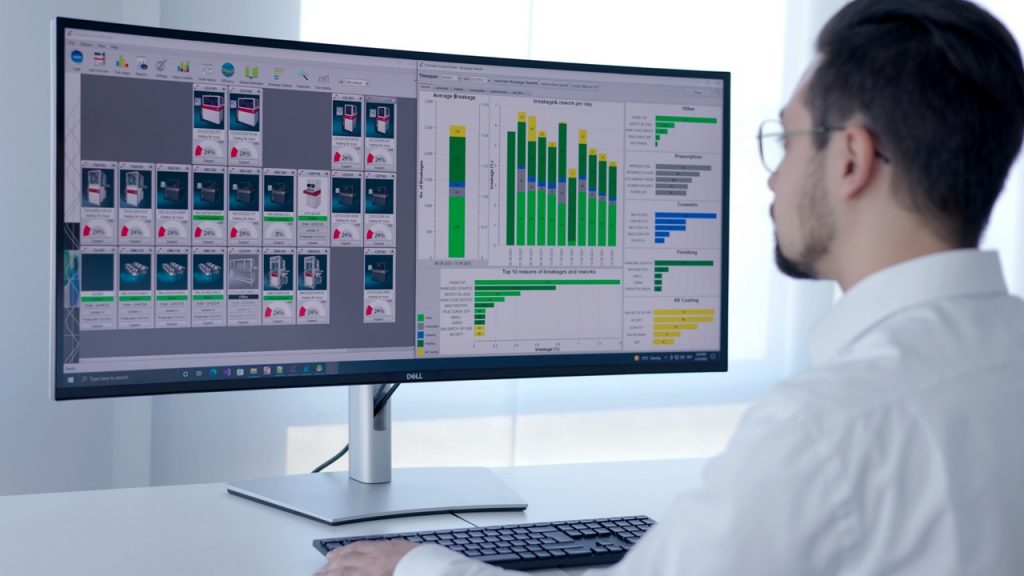
“In fact, it serves all the key positions in the lab – lab manager, quality manager, line driver and service manager – with relevant information,” says James Monaghan, Senior Director of Lab Operations at National Vision Inc. The MES seamlessly interacts with the intelligently interlinked machines, conveyors, and support systems to capture and analyze real-time data:
- Machine status
- Utilization factors like Overall Equipment Effectiveness (OEE)
- Quality/Breakage
- Tool lifetime
- Root cause analysis
- Error recognition
- Error prevention
- Statistical error analysis
- Routing options
With this, the lab manager will receive a new role in the lab ‒ a much more strategic one. He or she e.g. will be able to better determine when maintenance is due and how and when it is best carried out, decide about tools and lifetimes based on the operation results and assess whether it is possible to take the next order or not – whole production shifts and ranges can be planned more thoroughly. Lab managers can even handle priority orders for their customers without hesitation.
On the digital management cockpit, the lab manager can keep track of all data to understand the current lab performance, the throughput of different machines, and how well the capacities of the machines were being used. The operator can see – in real-time and well-structured– if there were any interruptions or failures that need to be controlled, adjusted or fixed. Data sourcing and advanced analysis provide deeper insights and feedback.
5. Trouble shooting at the next level
Big data might be a buzzword that in some context overpromises advancement. However, the smart MES proves how data can really make a difference: Especially, the error recognition is a game changer for lab managers, compared to how annoying troubleshooting used to be in the past. “Before the smart system, this equaled the work of detectives: sequentially tending from one error to the following, digging deeper to find its origin,” says Monaghan: Whereas the MES tackles the underlying big error straightaway. This prevents aftereffects, production losses and time-consuming analysis.
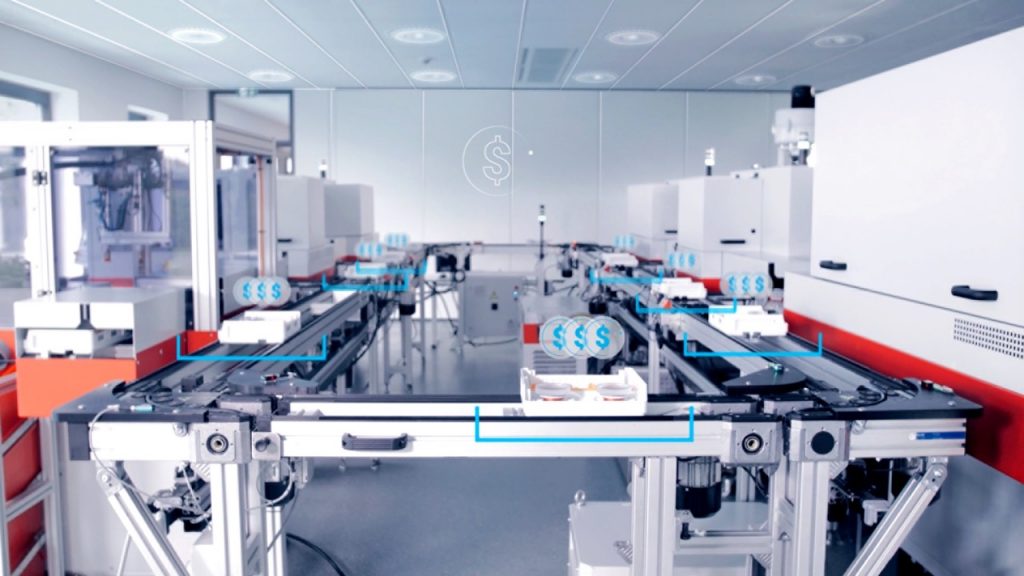
Monaghan concludes: “In a nutshell: It delivers the shortcut to immediately solving the problem at its roots, while the lab manager does not waste time on investigating and chasing one error after the other. Moreover, with trend recognition a MES system can initiate counteractive measures before a severe problem arises.”
Latest versions can even calculate the cost per lens – a valuable strategic advantage for the economic and financial management.
6. Self-Sustaining
When it comes to the organization of tasks, priorities and maintenance, a smart lab will help to establish new agile structures and adds remote solutions – easing daily business. Helpful tools like a Computerized Maintenance Management System (CMMS), allows scheduling, the procurement of parts and personnel planning.
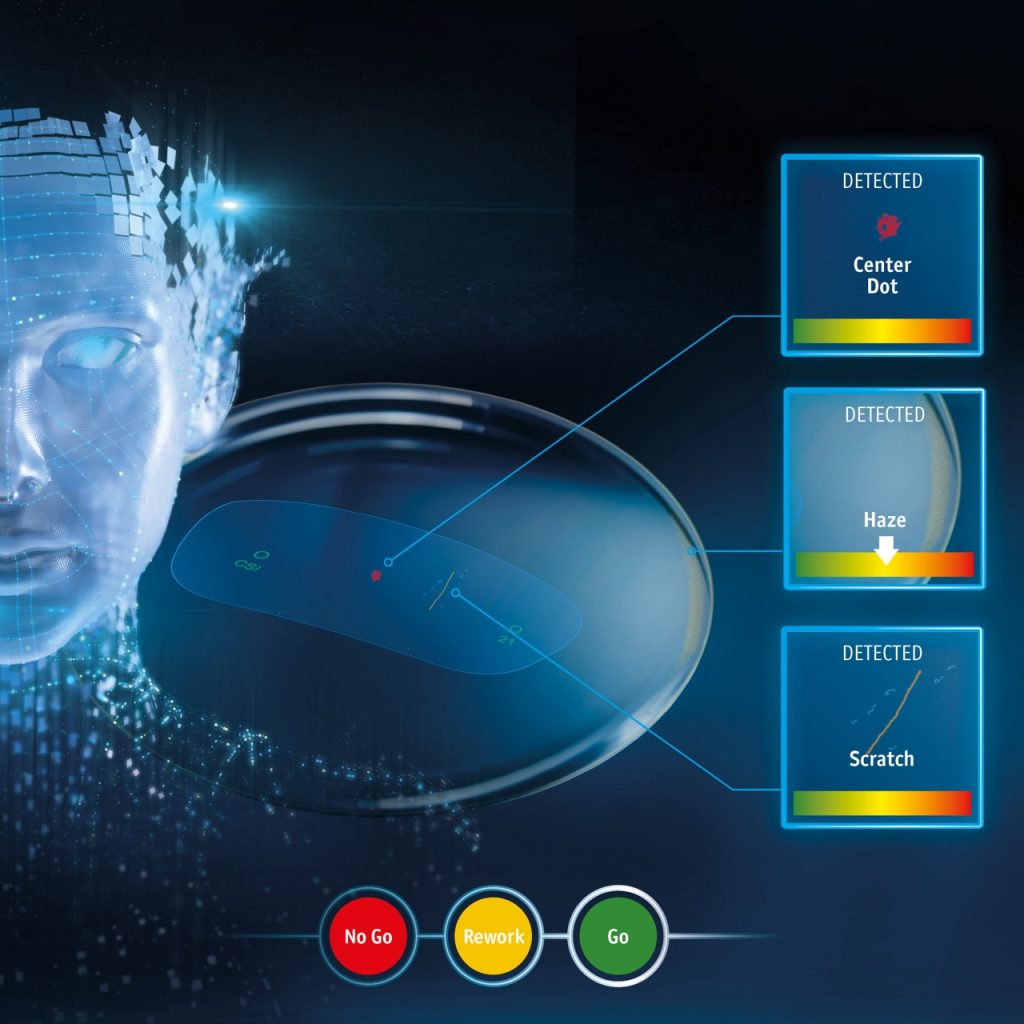
It provides a comprehensive picture of what needs to be done. It shares instruction manuals – video tutorials or PDF handbooks – or supports reactive maintenance to make sure that the user receives real time support from the supplier. In interactive sessions, any specific questions or issues can be handled. Downtimes are being prevented with this software.
7. Modular system for continuous evolvement
Just like the bricks and stones of a Lego system, the modular Modulo system can be arranged easily in different ways, building a unique future lab. There is a standard arrangement, but with the easy extension possibilities there are many possibilities and options that can be used to arrange the lab exactly to the individual needs. It is possible to install such a lab from zero or convert an existing lab. Important to mention that it is conceived to be a lab that stays relevant in a given structure and can „grow“ and become better.
“As a very elaborated standardized system, with easy to install modular options – that does not require widespread reconstructions – it is a highly flexible system that can be easily extended. A real high performing power-lab is never a static condition, it means continuously optimizing lab production for the future market, handling resources, and serving the demands of the market,” Schneider says.

New machines on the market, such as the automated deboxer or AI-based cosmetic inspection, can be added simply to the modular system. And if the lab-layout needs to change to meet higher production requirements, the modular loop allows rearrangement or the addition of the machines in any order.
Schneider summarizes: “Modulo can show its full potential as an integrated system – still, the machines also work individually. We wanted labs to have the option to switch step by step, or let their dream-lab rise over time, following a systematic approach.“
8. No future without sustainability
There is no denying – when it comes to climate protection things have to change. Economic enterprises have huge potential to help form these changings. As in any other producing sector, an ophthalmic power-lab has to reflect this need to save resources.
Modern state-of-the-art machinery can build the foundation for this value: Schneider shows efforts e.g. with innovative lens protection, where a small amount of UV-cured lacquer film protects the lens instead of conventional tapes and thus eliminates a high amount of plastic waste. Also, the deboxer that supports recycling of lens boxes by separating waste materials.
More holistically, the implementation of a smart lab dramatically reduces breakage thanks to early error recognition. By preventing breakage, resources for reproduction can be saved completely. In addition to waste reduction, also power consumption and resources such as water in the washers are being minimized with every new generation of machines.
A real power-lab continuously works towards that goal to have clean and resource saving production and low waste – for our future on this planet.
The conclusion of a power-lab
Many words to say what a future lab is since it has many faces. Most importantly, it is a smart and complex system that facilitates operating cycles and creates seamless workflows to improve lab work and serves the operators. An average lab can be run by one lab manager, who has highest control over resource management, lab productivity and thus the lab’s profitability.
A power-lab allows high productivity and reduces complexity where needed. Fewer steps cause fewer errors, therefore creating machines, processes, and communication as simple as possible evens the path for great achievements. No unneeded waste of energy – neither the energy of people who work there nor unnecessary energy of the machines in operation.
Digitization and remote services leverage lab management to a modern era with fast ability to react on new parameters and circumstances. This changes labs in many more aspects than just higher cost-effectiveness. Lab managers can follow their own strategic vision to lead their lab to economic growth. The results: improved working conditions, best products, highest competitive advantages. ◆

Sandra Stry
Sandra Stry holds a PhD study of physics from Heinrich-Heine Universität, Düsseldorf, Germany. She started her career as project engineer at her alma mater and worked as head of R&D at Sacher Lasertechnik, n-Sigma Microsystems and PHIcom before joining Schneider in 2011 as senior project manager. Since 2019 she is the head of project management at Schneider.

Kim Kathrin Leidig
Kim Leidig has a master’s degree in literature & media studies. As professional multimedia storyteller in a content marketing agency, she made scientifical subjects more tangible for the public. As project manager and marketing consultant, she helped her customers in developing unique strategies. In 2023, she joined Schneider as marketing specialist and journalist.


